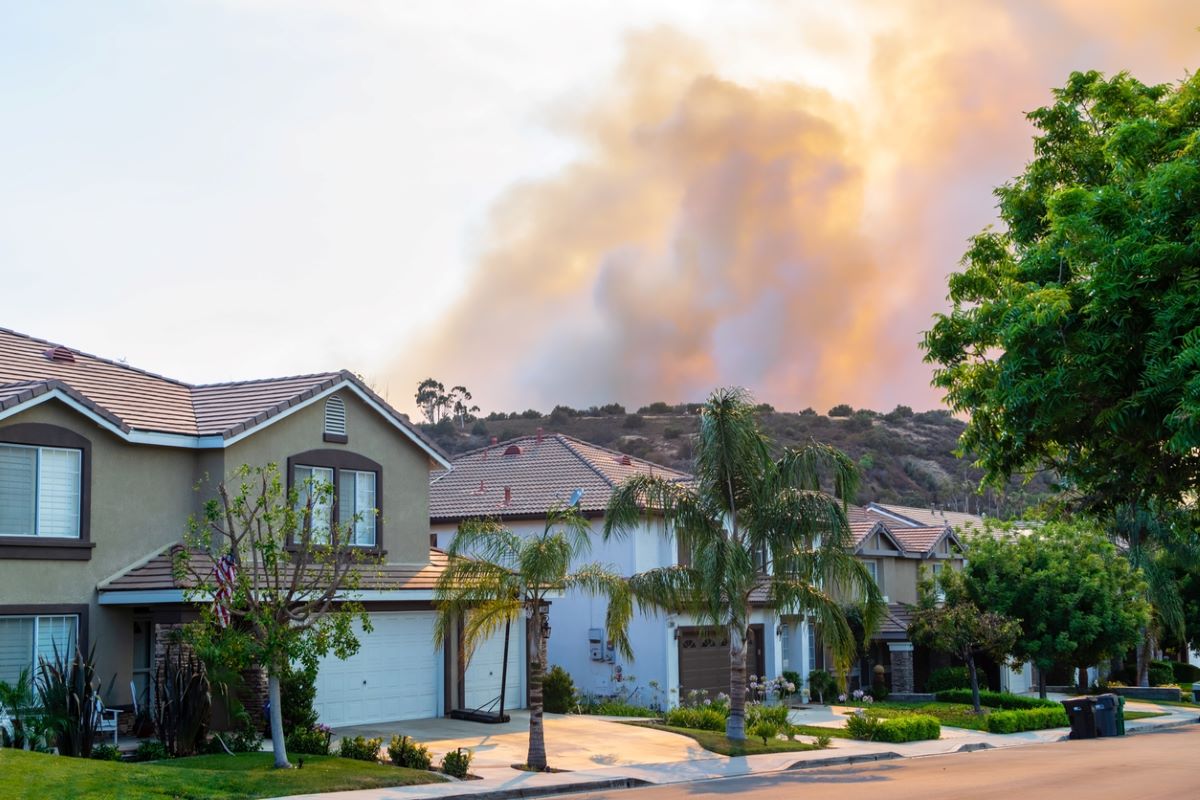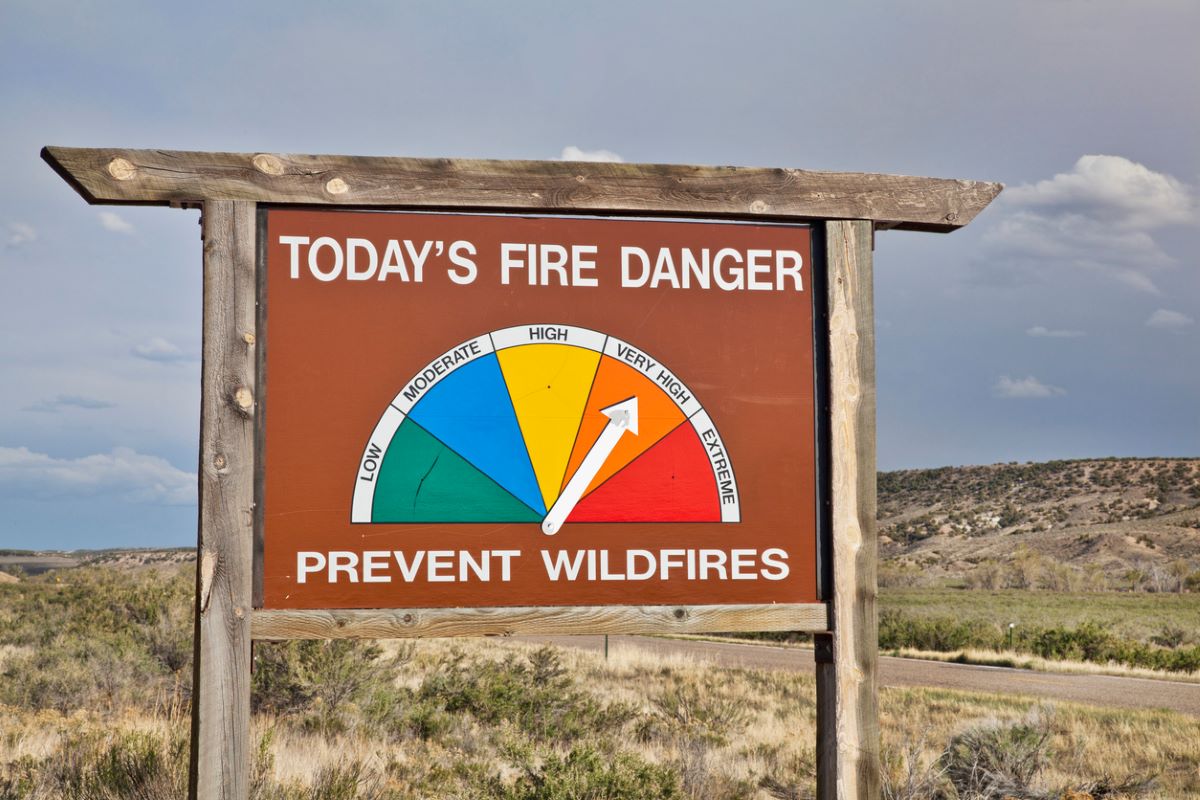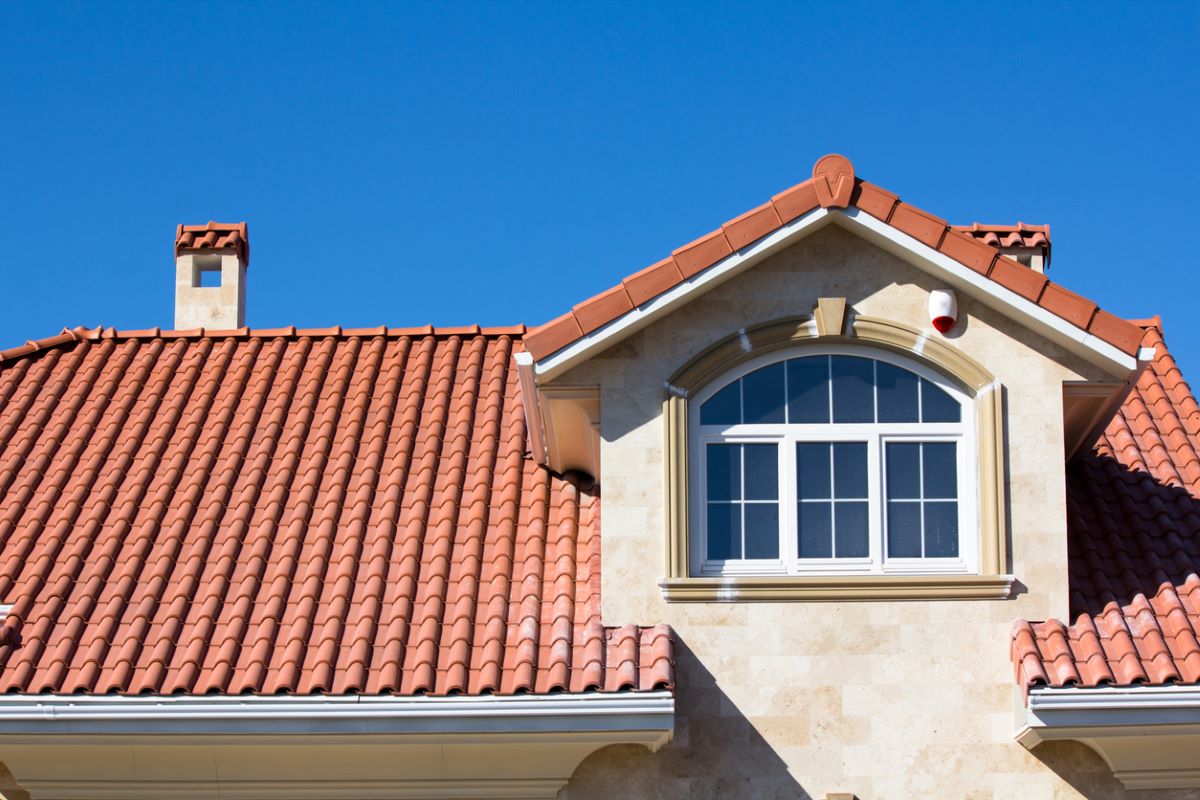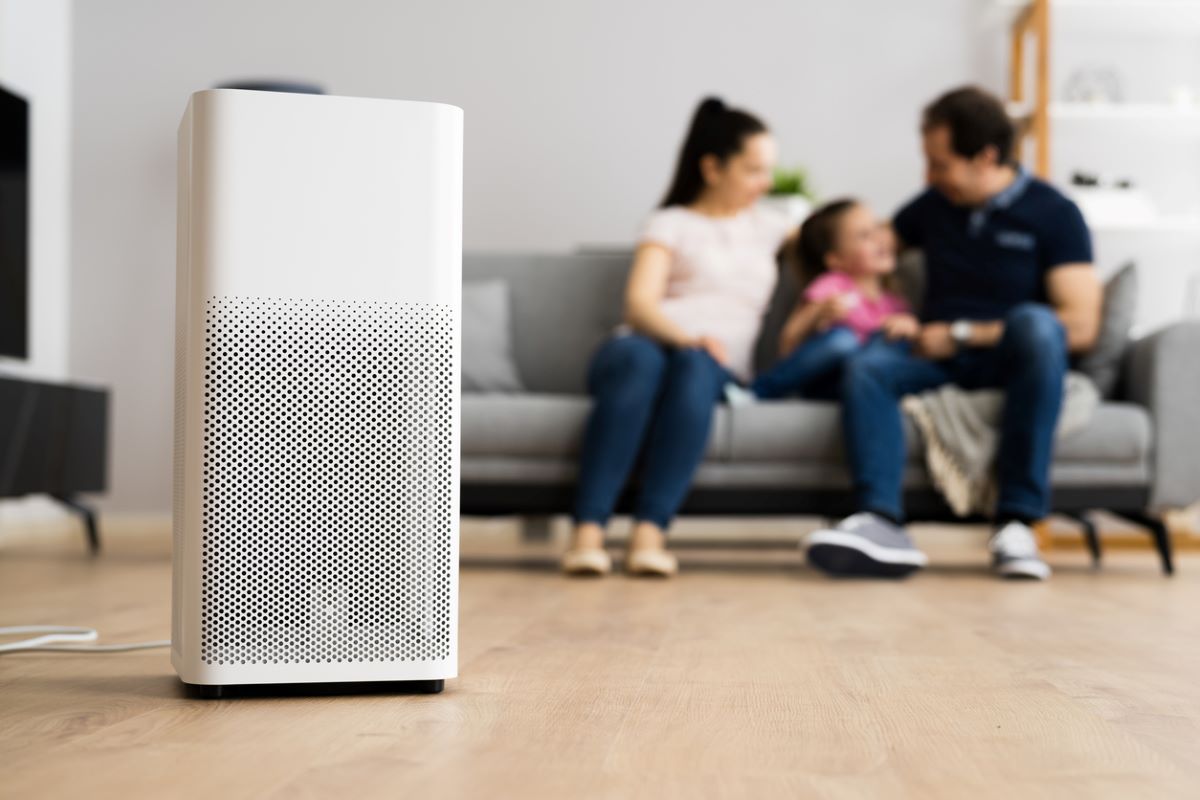

We may earn revenue from the products available on this page and participate in affiliate programs. Learn More ›
Wildfires can wreak havoc on entire communities instantaneously. Unfortunately, wildfires are getting more intense and frequent due to climate change, with recent years seeing record-breaking wildfire seasons. This is happening because higher temperatures and shifts in weather patterns dry out vegetation and make fires more likely to ignite and burn longer.
More than 30 million homes in the United States have a measurable wildfire risk. States with the most wildfire-prone properties include California, Florida, and Texas. According to a 2020 study by the nonprofit research group Headwater Economics, wildfires destroyed nearly 89,000 structures between 2005 and 2020, with more than 60 percent of the losses occurring in 2017, 2018, and 2020 alone.
With wildfires on the rise, what do you need to know if you are looking to purchase a home in a wildfire-prone region? Consider these critical questions before signing on the dotted line.

1. What is the wildfire risk in the neighborhood?
The top data to know before buying a house in a wildfire-prone region is the area’s wildfire risk level. Fortunately, there are several free online tools now available to determine this: the USDA and U.S. Forest Service’s Wildfire Risk to Communities tool, nonprofit First Street Foundation’s Risk Factor, Realtor.com’s Wildfire Risk information portal, the National Interagency Fire Center’s wildfire risk map, and Climate Check. These resources provide interactive maps, charts, and resources to help homebuyers and communities understand, assess, and reduce wildfire risk.
2. Has the home ever been affected by a wildfire?
Be sure to ask if the home has ever been damaged by a wildfire in the past. You also can explore the Federal Alliance for Safe Homes’ website to view disaster history by ZIP code. This will help indicate whether the home is in a wildfire-prone area, which is important to know because wildfires can strike the same zone more than once. If the house is in an area that has experienced a wildfire before, make sure to appraise the home for any damage, check with the local zoning department about past permits for structural repairs, and find out what the homeowner has done to safeguard the home from future wildfire damage.
3. Is the home built with fire-resistant materials?
Take the time to determine whether a home has protections in place against wildfire. Using Class-A rated shingles, for example, will reduce the likelihood that a stray ember from the fire will cause the house to burn. Find out if the home has fire-resistant building materials like concrete and clay tiles and metal, slate, or composite shingles.
Multi-pane or tempered glass windows will also provide protection during a wildfire. Houses that already have wildfire protection in place will save buyers money in the long run and provide a sense of comfort during the home purchasing process.
RELATED: All You Need to Know About Residential Fire Sprinkler Systems

4. Was the landscaping designed to safeguard the home against fire damage?
There are certain steps that can be taken with landscape design to protect property from wildfires. When shopping for homes, assess the landscaping to see if it has been designed to lower wildfire risk. One thing you should look for is whether there’s a defensible zone around a property, which includes everything within a 100-foot radius of the house.
Another thing you’ll want to look for is whether the seller has cleared combustible materials from the area, such as removing dead brush, grass, leaves, other vegetation, and trees in dry regions. Keeping this debris away from the home will slow down fire. The National Fire Protection Association (NFPA) publishes a guide to defensible zones to learn more.
5. Is the neighborhood prepared for wildfires?
When faced with a crisis, it is helpful to have a community to lean on. Wildfires typically impact multiple homes at once, with entire neighborhoods being affected. It is important to learn as much as possible about a community’s culture. Is there an active homeowner association, and has it outlined emergency plans?
Are the neighbors friendly and ready to work together to help prevent wildfires? Check to see if the neighbors have taken precautions to help protect their home from wildfire; you are only as safe as your neighbors’ homes if a wildfire strikes nearby.
RELATED: The Ultimate Bug-Out Bag List: 30 Emergency Essentials for When Disaster Strikes
6. What kind of insurance is available, and is it affordable?
Before committing to purchasing a home in a wildfire-prone area, determine what kind of insurance is available and whether it is affordable. Typical homeowners insurance covers damage from fire to help repair or rebuild the home, pay for temporary housing, and replace belongings. However, the cost and extent of coverage will vary depending on the wildfire risk in the specific geographic location. In some cases you may need to purchase a separate wildfire policy.
Check the policy to understand the deductible and specific coverage details for wildfire damage. You may need to look into Fair Access to Insurance Requirements (FAIR) Plan insurance. Contact your state’s Department of Insurance for details.

7. How can indoor air quality be protected?
Another consideration is whether the house is set up to ensure healthy indoor air quality. Inhaling wildfire smoke can lead to serious respiratory and cardiovascular issues. Review the home to make sure the HVAC system is new and running efficiently, doors and windows are sealed properly, and whether the home has an air purification system.
Some other tips for keeping wildfire smoke out of your home include: using a high-efficiency HVAC filter, closing windows and doors, limiting trips in and out of the house, turning off the fresh air intake setting on the HVAC system, avoiding evaporative coolers and portable air conditioners with a single hose, preventing ash from getting into your home, and running a portable air cleaner.
8. What is the evacuation plan?
Being able to get out quickly if a wildfire is headed your way is also an important factor to consider when choosing where to live. Will you be able to evacuate safely? Does the HOA or local government provide tips and updates regarding evacuation, such as an app or text-based alert system? It will certainly be easier if the evacuation plan is already in place as opposed to you having to figure one out yourself. No matter what, keep your vehicle full of fuel or fully charged at all times and prepare an emergency bag with some necessities should evacuation be necessary.
